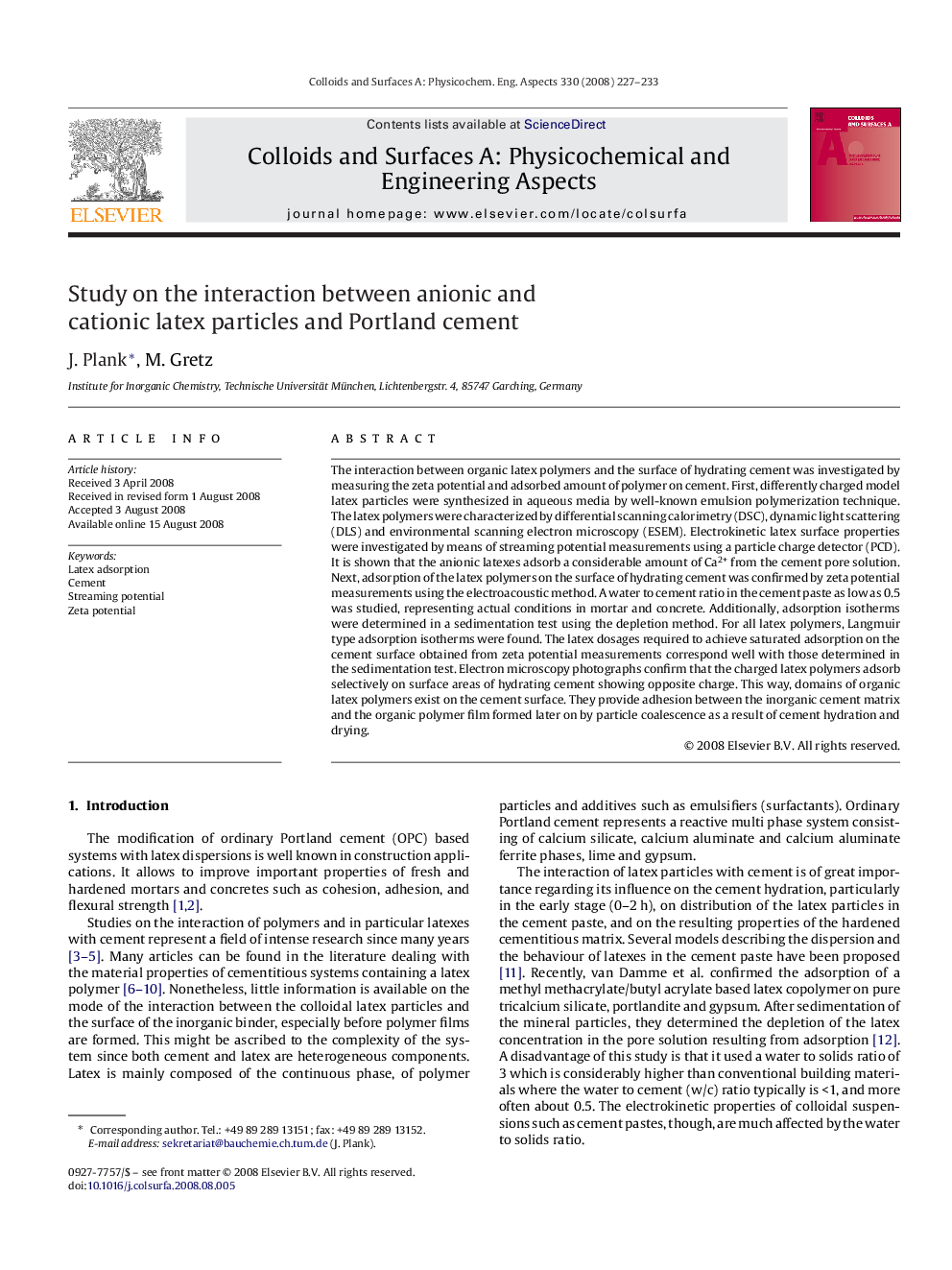| Article ID | Journal | Published Year | Pages | File Type |
|---|---|---|---|---|
| 596444 | Colloids and Surfaces A: Physicochemical and Engineering Aspects | 2008 | 7 Pages |
The interaction between organic latex polymers and the surface of hydrating cement was investigated by measuring the zeta potential and adsorbed amount of polymer on cement. First, differently charged model latex particles were synthesized in aqueous media by well-known emulsion polymerization technique. The latex polymers were characterized by differential scanning calorimetry (DSC), dynamic light scattering (DLS) and environmental scanning electron microscopy (ESEM). Electrokinetic latex surface properties were investigated by means of streaming potential measurements using a particle charge detector (PCD). It is shown that the anionic latexes adsorb a considerable amount of Ca2+ from the cement pore solution. Next, adsorption of the latex polymers on the surface of hydrating cement was confirmed by zeta potential measurements using the electroacoustic method. A water to cement ratio in the cement paste as low as 0.5 was studied, representing actual conditions in mortar and concrete. Additionally, adsorption isotherms were determined in a sedimentation test using the depletion method. For all latex polymers, Langmuir type adsorption isotherms were found. The latex dosages required to achieve saturated adsorption on the cement surface obtained from zeta potential measurements correspond well with those determined in the sedimentation test. Electron microscopy photographs confirm that the charged latex polymers adsorb selectively on surface areas of hydrating cement showing opposite charge. This way, domains of organic latex polymers exist on the cement surface. They provide adhesion between the inorganic cement matrix and the organic polymer film formed later on by particle coalescence as a result of cement hydration and drying.
